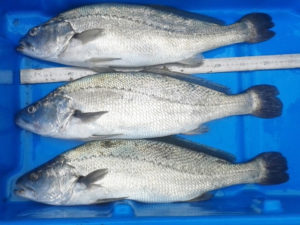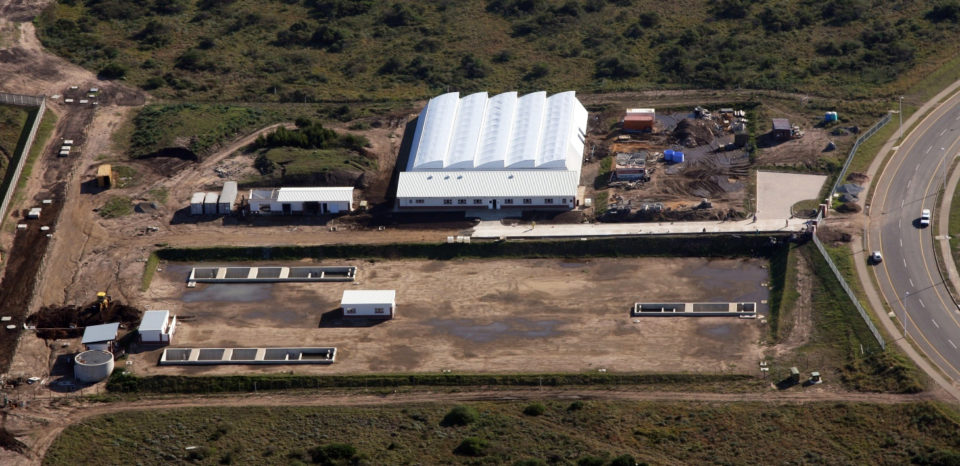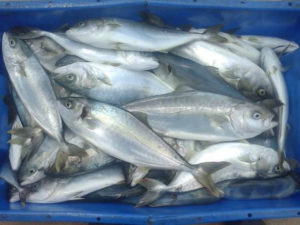Lack of transparency, investor ignorance led to millions in losses, yet valuable lessons were learned

My story starts in the early 1990s. After leaving university as a bright-eyed aquaculture graduate, I quickly realized that I was very well qualified to do nothing, and decided to remedy the situation by setting out on an international adventure to gain life and practical aquaculture implementation experience.
My first stop was Maun in Botswana, where I was contracted to run a very small wildlife touring company for a year. My memories of living in Maun in those days, when the tourism industry was booming, always reminds me of what the aquaculture industry is like today: a pioneer town brimming with opportunity, where everyone knows there is investment potential, but where risk and misinformation lurk around every corner.
From Botswana, I moved on to pick up international working experience at marine aquaculture operations in Israel and Cyprus, and visited others in America and Europe. After returning to South Africa in 1996, I worked at large marine aquariums in Durban and abalone farms in the Western Cape Province, all while attempting to pilot the development of the marine fish farming industry in South Africa wherever I could.
The widespread failure of marine fish farms
I ended up in East London in 2008, leading the development of a pilot-scale, land-based marine fish farm focusing on the production of dusky kob (Argyrosomus japonicus) and yellowtail kingfish (Seriola lalandii). At this time, a number of marine fish farm developers had seen the potential for the sector to attract investment and proceeded to draw up impressive business plans backed with seemingly comprehensive proof-of-concept growth trials in order to attract investors.
Commercial investors saw the opportunity and threw large sums of money at these initiatives. I was lucky enough to be involved in one of these projects, but insisted on a proof-of-concept pilot phase to empirically prove the business fundamentals prior to commercializing the investment. At the same time, a number of other commercial-scale marine fish farms were constructed around the country and operated for a few years. Over this period, development finance institutions were lured in as commercial partners and there was a great amount of excitement at the creation of a new sub-sector of the South African aquaculture industry.
The market waited expectantly.
Every single marine fish farm failed to deliver on its technical mandate in a very significant way. If any farm delivered 50 percent of what it set out to produce, that was a lot. Despite most of the operations being properly financed, my estimate is that the average farmed fish production volumes were in the order of 25 percent of what was originally projected. My operation included.

In a flurry of boardroom activity at most of these operations, excuses, a lack of data, data manipulation and misinformation were the order of the day. There was little or no trustworthy information available for the shareholders to make effective decisions and for years these operations continued to bleed operating capital while they tried to find solutions to their production problems. My operation was not immune to this instability, and at this time, my CEO (and majority shareholder) was shot and killed in his office by an ex-business partner, who immediately afterwards took his own life. The exact reasoning behind this turn of events is still unclear, but one can be assured it relates in some way to the flows of investment financing. After this, the company that bought our facility over was implicated in an international Ponzi scheme, and failed to come up with adequate financing for the commercial expansion of our facility.
Investors were blissfully ignorant, lacking a basic understanding of the main productivity drivers of these aquaculture operations.
This scenario reminds me of my time in Botswana, where stories of business dealings in the pioneer town of Maun were as interesting and intoxicating as the legends of the “Big Five” (lion, elephant, buffalo, leopard and rhinoceros) of the African Savanna.

Ownership at these commercial scale marine fish farms has since changed hands, with tens of millions of U.S. dollars’ worth of investment capital being lost in the process. Much of the capital value was lost during the construction and commissioning phases of the projects, but a significant proportion was also lost during the operational phase, when project developers remained unjustifiably optimistic. They were afraid to face the fact that they were not achieving their production milestones, and needed to engage honestly with their investors on these issues. Equally so, investors were blissfully ignorant, lacking a basic understanding of the main productivity drivers of these aquaculture operations. They were easily fooled.
As time went on, the investment community, especially the development finance institutions, became paralyzed. They were being badly burned, and now did not know who or what to believe.
This is truly a case of where developer optimism and investor ignorance has resulted in an unintended complicity – allowing marine fish farms in South Africa to be built and operated on unproven business fundamentals. This has led to a state of investor insecurity and weak investor confidence in the development of the industry. Today, despite having now proven these productivity drivers empirically, marine fish farmers can consider themselves very fortunate to receive any form of development financing, whether from private investors or public development finance institutions.
Lessons to be learned
To avoid this scenario unfolding again elsewhere in the industry, the aquaculture investor firstly needs to know exactly what they are getting themselves into. The due diligence process prior to investment must be comprehensive, especially on the technical front. Investors generally know the importance of understanding and mitigating the financial, administrative, permitting, marketing and operations management risks, but they are generally at the mercy of the developer when it comes to understanding the technical risks of the farming operation itself. As a result, at least one independent technical consulting team should be hired to review all technical risks of the venture during the due diligence process and report back to the investor independently.
Once the investor is satisfied that all technical and administrative risk aspects of the investment have been understood, project development milestones need to be agreed upon with the developer in advance, and they should be enforced. Rather than these milestones being technical or production volume related, they should be productivity related – instead of requiring the farm to be at a production volume of, say, 10 tons per month after 18 months of operation, productivity milestones can be measured after the first month of operation. Farm productivity milestones are at the beating heart of farm operations, they are indicators of farm productivity and can be measured at any instant of the farm’s development.
Farm productivity indicators
There are three farm-productivity indicators. All capital and operating costs of an aquaculture facility are reflected in one or more of these productivity indicators. Essentially, they indicate how efficiently the farm converts feed into fish flesh and, apart from market price, the return on the investment is wholly dependent on them achieving their targets as set out in the business plan. These indicators are:
- Growth rate. This is a measure of how fast the fish is growing. A slow-growing fish extends the production period, resulting in an increased cost of “animal accommodation” on the farm in terms of infrastructure cost, feeding of the maintenance portion of the diet, electricity, staff salaries, etc. This situation is exaggerated by the impact of the opportunity cost in not being able to accommodate the growth of new animals on the farm.
- Food conversion ratio (FCR). This is a measure of how efficiently feed is converted into fish flesh. A high FCR means more feed is required to produce a similar unit of fish flesh.
- Stocking density. This is a measure of the number of fish that can be kept together without compromising fish growth rates and FCR. A reduced stocking density results in a lower number of animals that can be accommodated and grown on the farm, and so reduces the farm’s productivity potential.
As an example, any investor should know that the largest operating cost on a fish farm is the cost of feed. As an indicator of how a poor FCR has a negative impact on the economic viability at a land-based dusky kob farm, when all other farm-productivity drivers remain constant, an increase in FCR from 1.17:1 to 1.50:1 results in a drop in the internal rate of return (IRR) from 28 percent to 18 percent (Table 1).
Bok, Table 1
| Fish farm financial drivers | Planned | Actual | Actual | Actual |
|---|---|---|---|---|
| Growth rate to 1 kg | 12 months | 12 months | 12 months | 12 months |
| Stocking density to 1 kg | 40 kg/m3 | 40 kg/m3 | 40 kg/m3 | 40 kg/m3 |
| eFCR to 1 kg | 1.17 : 1 | 1.25 : 1 | 1.30 : 1 | 1.50 : 1 |
| Market price at 1 kg | R75/kg | R75/kg | R75/kg | R75/kg |
| IRR (after tax) | 28% | 26% | 24% | 18% |
Market price is the fourth and final indicator of an aquaculture business’s economic viability, but is not related to farm productivity, other than if there is an effect of product quality on the market price.
Perspectives
In addition to the usual investment due diligence processes, my investment-phase recommendations are:
- Include the farm productivity targets of growth rate, FCR and stocking density into the financial plan.
- Prior to investment, independently audit the technical plan to ensure the planned productivity targets are achievable.
- Include an in-house reporting structure that accounts for the farm’s productivity indicators.
- Independently and empirically audit the farm’s productivity indicators.
- Compare the achieved productivity indicators against the targets to ensure that the farm is operating at the predicted levels of efficiency.
Despite everything that the South African marine fish farming industry has been through over the last decade, the operational experience gained over the period has helped to improve animal productivity in intensive aquaculture systems, especially land-based marine RAS systems. I firmly believe we are now in the strongest position ever to invest in the industry and make it thrive.
Author
-
Andre Bok
Aqua Management Systems (Pty) LTD
PO Box 8110, Nahoon, 5210
East London, South Africa
Tagged With
Related Posts

Health & Welfare
A holistic management approach to EMS
Early Mortality Syndrome has devastated farmed shrimp in Asia and Latin America. With better understanding of the pathogen and the development and improvement of novel strategies, shrimp farmers are now able to better manage the disease.

Intelligence
A land grab for salmon (and shrimp) in upstate New York
The operators of Hudson Valley Fish Farm see their inland locale as a pilot to prove that land-based fish farming, located in close proximity to major metropolitan markets, can be successful.

Responsibility
Assessing culture potential of red emperor snapper in New Caledonia
The red emperor snapper, known as “pouatte” in New Caledonia, is valuable throughout its broad geographic range and a highly valued food fish locally. Declining wild catches and market demand have provided the incentive to carry out technical feasibility studies to determine its commercial aquaculture potential.

Innovation & Investment
Aquaculture Exchange: Flavio Corsin, IDH
IDH Vietnam Manager Flavio Corsin speaks passionately about the importance of controlling disease and getting all stakeholders to put competition aside and pull on the same end of the rope. Improvement initiatives for pangasius, shrimp and tilapia are among the Dutch sustainable trade organization’s priorities.


